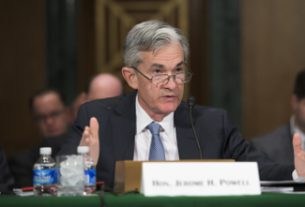Market events this week have made even the most bullish investors realize that the US economy isn’t what it used to be. In an attempt to ensure “fair trade,” President Trump placed a 25 percent tariff on $50 billion worth of Chinese imports last Friday. The Chinese retaliated, and Trump threatened on Monday to place additional tariffs on another $200 billion of Chinese imports if China doesn’t abandon its retaliatory tariffs. The prospect of a major trade war is real, and markets know it.
This is all part of an attempt to return to the glory days of US economic might, the post-World War II days when the United States was the world’s hegemon, accounting for over 40% of global GDP. The US “bestr[o]de the narrow world like a Colossus,” and flexed its economic and political muscle with impunity.
But that all has changed. Thanks to globalization and industrialization, the rest of the world is catching up to the US. China, which throughout history has been one of the world’s largest economies, as late as 1820 was responsible for an estimated one-third of global GDP. But with the Industrial Revolution taking hold in Europe and the United States, and China’s disastrous experiment with Maoism setting the country back decades, China stagnated. It now is modernizing its economy and using its vast resources and population to take back a position it held for centuries.
If the United States wants to maintain its role as a world economic leader, it can’t look back to the glory days of American manufacturing for inspiration. Those days are gone and over, destroyed by unionization and government regulation that strangled the life out of American industry. And the competitive advantage that American industry had over the rest of the world is long gone too. That’s one of the reasons that General Electric was just removed from the Dow Jones Industrial Index after a tenure of over 110 years.
Where the US has always excelled is in innovation. Allowed to break out of the mold, Americans have been incredibly inventive and innovative, discovering new technologies, life-saving medical remedies, and founding many of the world’s largest and most influential corporations. Trying to force the economy back to one in which heavy industry dominated will only guarantee further economic stagnation and allow China, Japan, India, and other countries to leapfrog the US in the development of the new technologies and services that will be the growth industries of the 21st century.
The future of the US as a world leader will be dependent on allowing the market economy to flourish rather than withdrawing into dirigism. But if recent trends continue, investors may want to put trade their blue-chip stocks for gold in order to hedge against continuing economic headwinds. Gold has protected investors for centuries and will continue to do so in the future, no matter which direction the economy heads.
This article was originally posted on Goldco.





